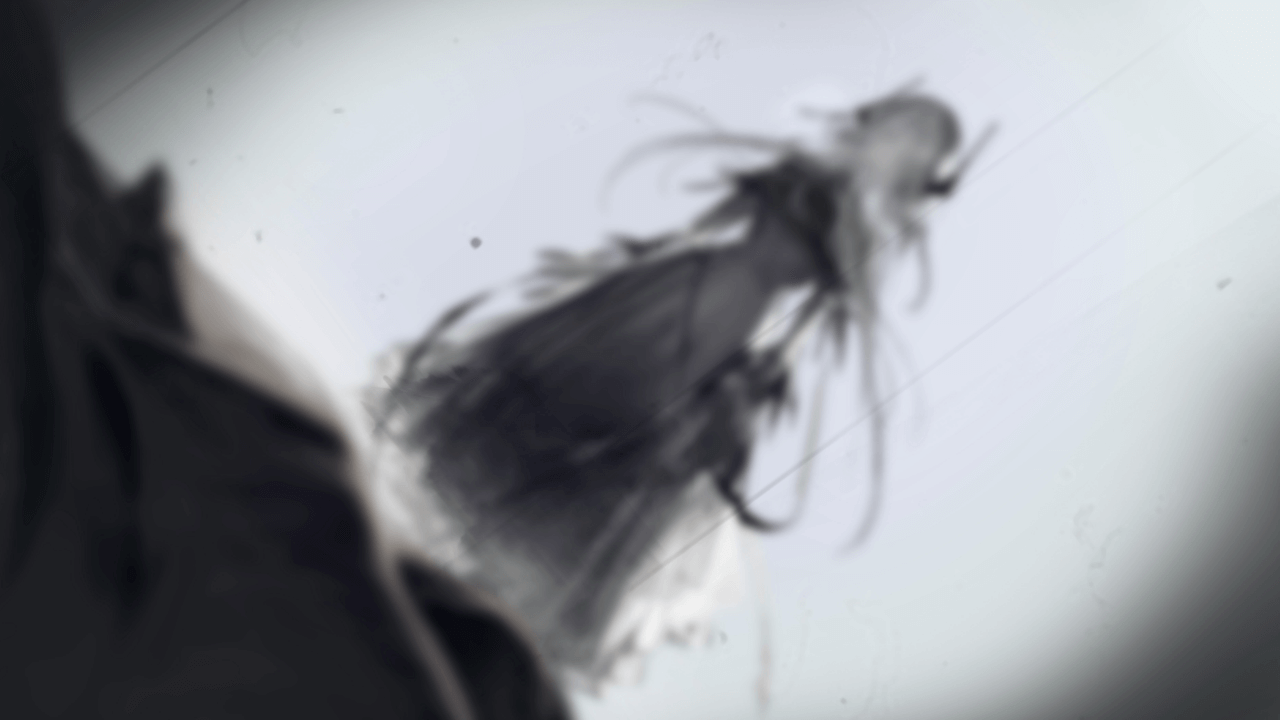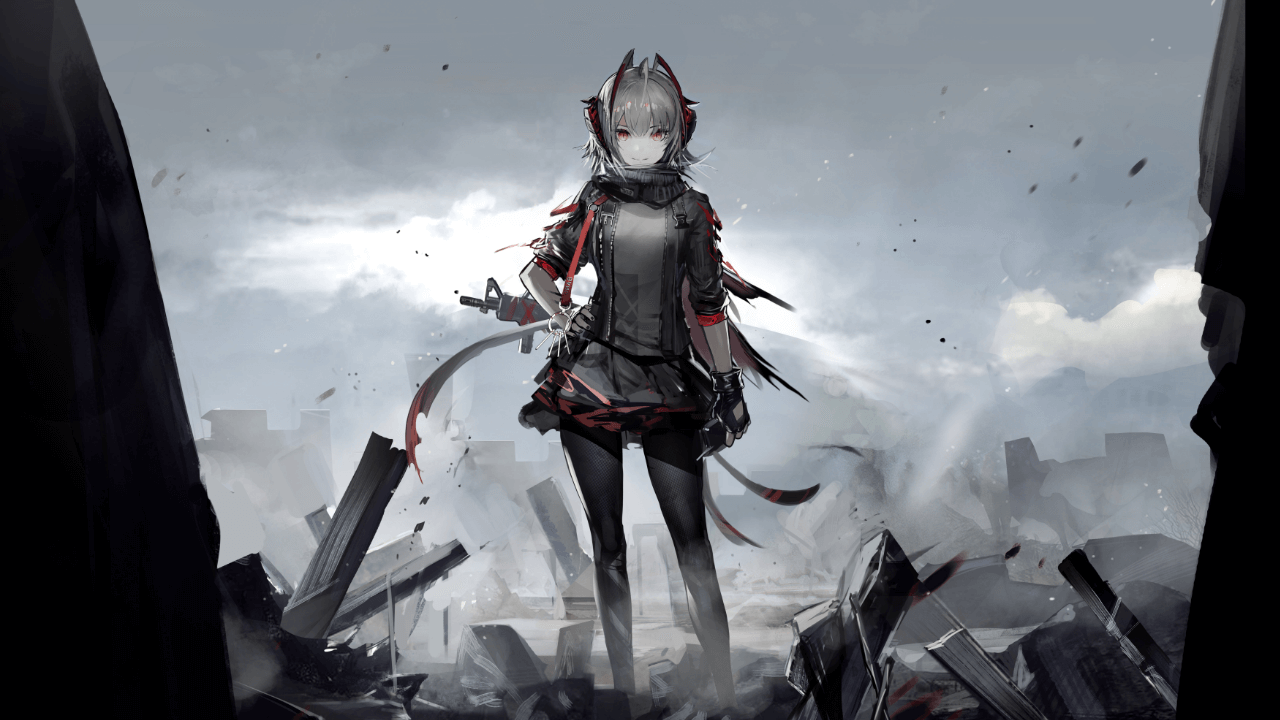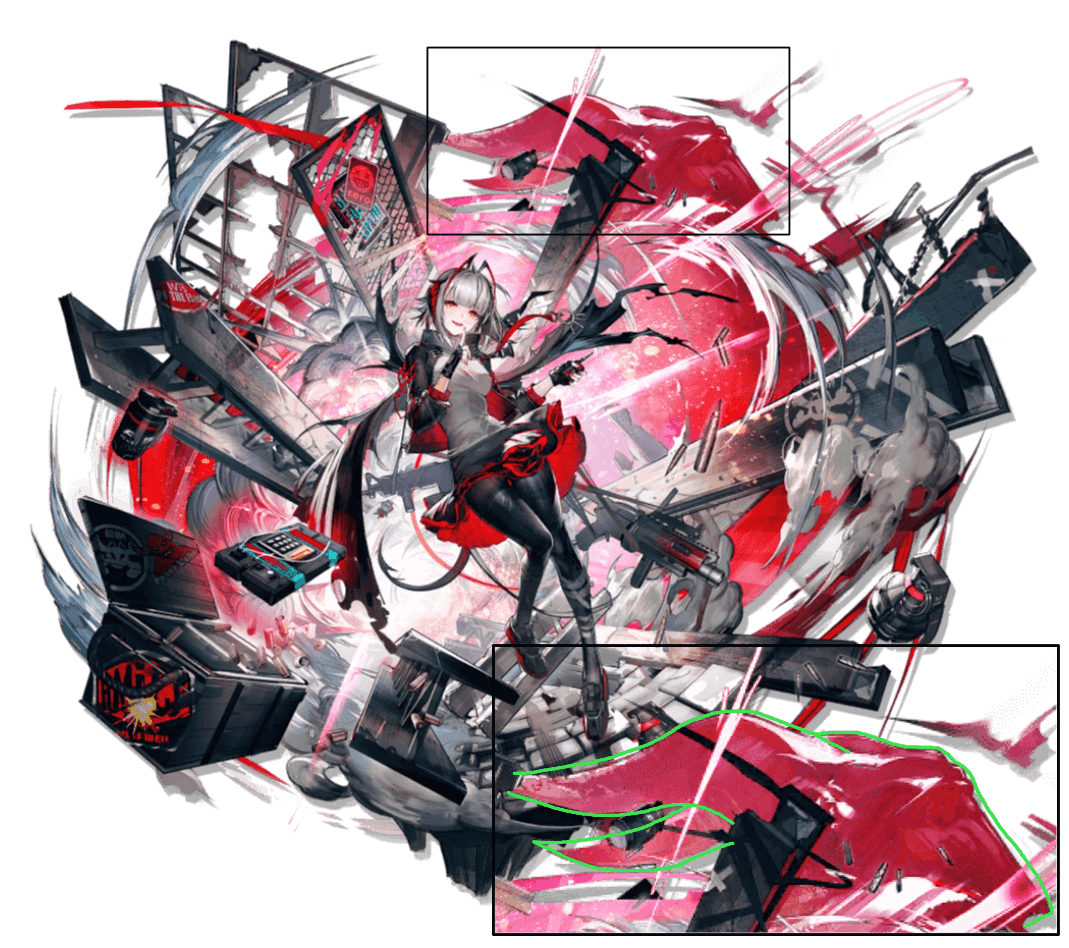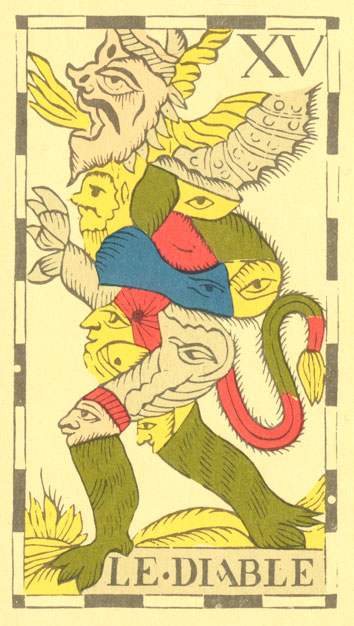W, the Mercenary, the Devil of Babel
There is also a child born in the long dark night, she has learned how to survive within every swinging story.
She is a mercenary, a pretender, an unscrupulous dangerous individual.
A "rootless" one... A "Sarkaz".
Before Darknights Memoir, the Kazdel Civil War was an incident mentioned in many Sarkaz operators' profiles yet we were rarely given the details. And although this event did tell us many things about the civil war, Darknights Memoir, at its roots, is a story about W. As such, I'd like to talk about W, and save the civil war for when we get more information on it in the future.
As with most fictional works, this will only be my own interpretation of W's character. This will also contain spoilers to Darknights Memoir.
Let's begin.
The Mercenary

The Kazdel Civil War is likely modeled after the War of the Austrian Succession, with Maria Theresa as the basis for the Sarkaz King Theresa. It is under this setting that we first meet W, who at the time was still a young girl. She followed Hoederer back to his camp after retrieving the former W's belongings, and Hoederer, seeing the potential in her, took her in. W stayed with Hoederer and Ines' Sarkaz mercenaries, until she met Theresa, her King.
Interestingly, the intro to Darknights Memoir, which I quoted at the beginning of the article, is the only place to ever refer to W as a "child". Whether it's intentional or not, the story seems to lead us away from the thought that W is a kid. She is W, a warrior, a Sarkaz mercenary, a member of Babel. After all, age is mostly irrelevant on the battlefield, and as Rosmontis says in Chapter 7, their enemies won't see her or Amiya as children. In spite of this, I see W as nothing more than a young girl. The ideals that drive her are "naive", and her actions, albeit crazy, are also in a way childish.
Despite her looks, W, emotionally, is still a kid. A kid who grew up in a war zone, whose closest substitute for parents are two mercenaries whom she originally suspected were trying to get her killed.
Then, she met Theresa.

Much research has been done on the effects of war on children. Anxiety, cynicism, violent tendencies, and later onsets of depression are common among these victims of armed conflicts. In addition, there are an estimated 300 000 child soldiers in over 80 countries across the world. These children grow up without their families, and in addition to the traumas of warfare, they also suffer from emotional problems from the lack of attachment to their parents or caretakers.
For W, being born in Kazdel in the middle of a civil war couldn't have been a pleasant experience. We get no mentions of her parents, and seeing as how W couldn't answer when Theresa asked her for her name, it is probably safe to assume that her parents never had the chance to give her one, or they were separated before she was old enough to remember her name.
"People forget them all the time. What’s the point in making an effort to remember a name?"
Yet a name is one of the things that defines a person the most. We as humans attach meanings to names. We find it easier to connect to things with names. When names become something that's easily forgotten and uncared about, it would be hard to attach to something that doesn't have an identifier.
I've used the term "attach" a bit here, and it's not without reason. Attachment theory is a psychological theory that discusses relationships between humans, especially those between a child and caretaker. To put it simply, in regards to infants, they become attached to responsive adults who interact with them due to their social and emotional needs. This kind of attachment is not only present in children but in adolescents as well, as studies show that teens with a strong bond with their caregivers are less likely to engage in dangerous or illegal activities such as drugs and alcohol.
W was "raised" by Hoederer and Ines. They see her as a friend and comrade, but that was the extent of their relationship: comrades. They provided physical needs, but W still lacked a figure whom she could attach to, whom she could look up to, whom she could put all of her trust into.
Until she met Theresa.
"If you wait for the dust to settle in Kazdel... until you’re no longer “W,” we could speak like this once again.
"Maybe then you could have a more fitting name. A proper name for a Sarkaz woman like yourself."

In the early days of psychology, there was the notion that showing affection to your children is bad for their development. The belief was that a child only attaches to its mother because the latter provide it with nourishment, and showing affection would make the child grow up to be emotionally weak.
Nowadays we know it's a bunch of nonsense, but at the time psychology was still a new branch of science. There are of course people who thought differently, such as Carl Jung, an influential Swiss psychologist, who theorized that a child becomes attached to the mother not because she provides food, but because she provides love and care. However, it wasn't until psychologist John Bowlby released his studies that concerned maternal care and mental health and developed the attachment theory, and Harry Harlow came along with his wire mother experiment on rhesus monkeys, that the importance of parental love became widely recognized.
The wire mother experiment involved separating young rhesus monkeys from their mother at birth, then presenting them with two "mothers", one made from wires and the other from cloth, which provided comfort. Sometimes the wire mother had the feeding apparatus, and other times the cloth mother had it. In both cases, the infant monkeys overwhelmingly preferred the cloth mother over the wire one, regardless of the presence of food.
Hoederer and Ines, to W, are like the wire mothers. Despite raising her, there's a lack of attachment between them due to their mercenary-like styles of living, though it is shown that Hoederer and Ines do care about W, especially with Ines coming back to save W and telling her not to throw her life away before they were saved by Theresa.
And it was the arrival of Theresa that changed W.
Theresa was a King. The King of Sarkaz. Her ideals and motives were beyond W's comprehension, and the work W did in Babel was not much unlike her prior mercenary life. Yet Theresa asked W for her name—not the name given to her by Hoederer, the name owned by the first W, but her real name. The name that represented her. In a world that taught her the rules of "kill or be killed", where deaths are forgotten as quickly as their names, W met someone who said she couldn't forget her people's names, who told W that she should have a name that suits her. She met someone who didn't see her as a mercenary, but as a Sarkaz, a person with their own identity.
She suddenly had a purpose besides just being a mercenary.
If... if I could stand with them...
What kind of sights would I see?
The Devil

We don't know the details of what happened during the time W spent in Babel, but we do know that she grew very attached to Theresa, and her subsequent death sent W down a path of madness and vengeance. It's not a stretch to say that W was, to an extent, obsessed with Theresa, going as far as to trying to snap a photo of her despite the risk of being found by Kal'tsit, and wanting Kal'tsit to protect Theresa even with her deep dislike of the doctor.
I'm no psychologist, and I don't have a copy of the DSM-5. Rather than try to attribute W's behavior to a certain attachment style or condition and most likely get it wrong, I'd like to offer another perspective that involves less psychology and more of the occult.

In the background of W's E2 art, in the upper centre to the right, there is a head with long, curvy horns like that of a goat's. It's not usual that we get entities in Sarkaz operators' E2 art, compared to other operators who have their animal basis in their E2 art. Thus, this demonic entity is likely what W is based on.
And if we're talking about goat-horned demons, we'd have to talk about Baphomet.
As the next day dawned they called loudly upon Baphometh while we prayed silently in our hearts to God; then we attacked and forced all of them outside the city walls.
—Letter by crusader Anselm of Ribemont, in June of 1098
Modern historians would agree that the name "Baphomet" came from a corruption of the Islamic prophet's name Muhammad. In the early 14th century, when King Philip had many of the Knights Templar arrested because hey, you can't owe money to the Templars when there are no Templars, the name Baphomet popped up in several of the knights' confessions. The Templars allegedly worshipped Baphomet, although many denied it, and the accounts of those who confessed under torture varied greatly. No mentions of Baphomet were found in Templar documents.
In the 19th century, the name Baphomet became more closely associated with the occult. Éliphas Lévi, considered the greatest occultist of the nineteenth century, drew his own image of Baphomet as an androgynous humanoid with a goat's head, a torch between its horns, black-feathered wings, and a caduceus between its legs. This image became the most widely-known representation of Baphomet (despite it conflicting with what the Templars confessed). As it resembled the description of the Devil in tarot, it was used as the source for the Devil card in the Rider-Waite tarot deck, the most popular deck for tarot card reading.

A version of the Devil tarot card.
The Devil represents the darker aspects of oneself, whether it's behavior, habits, thoughts, and whatnot. It can mean entrapment, bondage, enslavement, and temptation. Here's where it gets interesting: on the plus side, the Devil can represent a powerful bond between two people, but it can also evolve into an unhealthy relationship where the dependence is too great.
Like the relationship between W and Theresa.
Chained down by her feelings for the Sarkaz King, W was pushed onto a path of vengeance. The "Devil" has captured her. and W became lost in her obsession, chasing after a person who is already gone.
Closing
Children who instigate, children who are cowardly. They all have gaps within their hearts and have no choice but to rely on each other. Within the possibilities, W also sees herself.
At the end of Darknights Memoir, W runs into two children. One of them has saved the other, like how Theresa had saved W on that battlefield back in Kazdel. The latter follows the former, like how W followed Theresa after waking up in Rhodes Island. But unlike Theresa, the unyielding child isn't some noble figure who is pained by the suffering of others. And unlike W, the waifish child has a chance to save the unyielding child by himself.
The waifish child made a choice: since he was saved, he will believe that he can become the savior. The unyielding child, no matter if what W said about him is true or not, also made a choice: he will believe in the waifish child, and allow himself to be saved.
They both decided, and will follow the path their choices lead them. As W has said, it is a person's thoughts and beliefs, and the strength they have in their beliefs, that drives them forward.
Like the two children, W had also made a choice—when she first met Theresa in the halls of Rhodes Island.
Like a moth to a flame, a worm in a hole.
You have to chase something, even at a cost.












